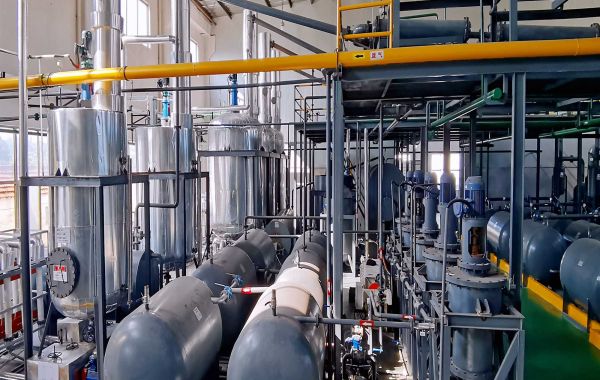In the world of lubricant production, base oil purity is paramount. Whether it's Group I or more advanced Group II and III base oils, purity directly influences the performance and longevity of end-use products like engine oils, gear lubricants, and hydraulic fluids. One of the key technologies enabling this high-level purification is the Base Oil Solvent Extraction Machine.
What Is Solvent Extraction?
Solvent extraction is a chemical process where a specific solvent is used to selectively remove impurities such as aromatics, sulfur compounds, nitrogen, and unsaturated hydrocarbons from base oils. These unwanted substances reduce the oil's oxidation stability and degrade its performance at high temperatures.
How the Machine Works
A Base Oil Solvent Extraction Machine typically consists of the following components:
Extraction Tower: This is where the solvent interacts with the feedstock. The feed base oil is introduced and comes in contact with the solvent (usually phenol or furfural), which selectively dissolves and separates the aromatic impurities.
Settling Tanks: After extraction, the oil-solvent mixture enters a settling tank, where the separation of two phases—oil-rich and solvent-rich—takes place.
Solvent Recovery Unit: Solvents are costly and often toxic. Efficient machines include a recovery unit where the solvent is distilled and reused, minimizing environmental impact and cost.
Product Finishing: The extracted oil is often sent to a hydrotreating unit or vacuum distillation to remove residual solvent and refine the oil further.
Advantages of Solvent Extraction
Improved Oil Stability: Removing aromatics increases the thermal and oxidation stability of the base oil.
Better Viscosity Index (VI): Aromatic removal helps achieve a higher VI, which is crucial for performance in temperature extremes.
Environmental Compliance: The closed-loop solvent recovery systems reduce emissions and improve operational safety.
Cost Efficiency: When integrated with recovery systems, solvent extraction is more economical than hydroprocessing alone for certain feedstocks.
Industrial Applications
Solvent extraction is commonly used in re-refining used lubricants, producing Group I base oils, and even in niche segments like bio-lubricants where chemical purity is critical. It's a mature technology that remains essential in both old and new refineries worldwide.
Conclusion
Solvent extraction machines play a vital role in refining base oils to meet modern standards of performance and sustainability. Their ability to selectively remove undesirable compounds ensures that the end product is clean, efficient, and long-lasting. As the demand for higher-grade lubricants continues to grow, these machines will remain a cornerstone of base oil production and re-refining operations.







